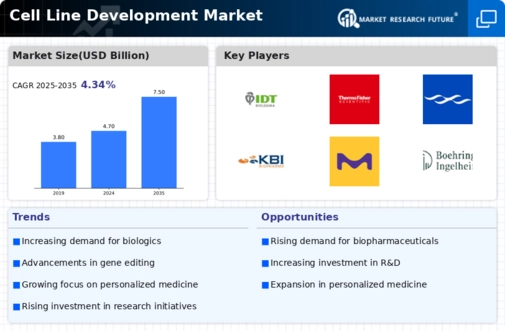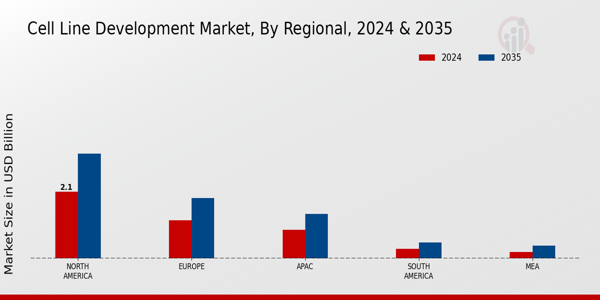Market Trends
Key Emerging Trends in the Cell Line Development Market
The market dynamics of cell line development are shaped by various factors, including technological advancements, growing demand for biopharmaceuticals, regulatory requirements, and emerging trends in the healthcare industry. This market revolves around the creation and optimization of cell lines for use in biopharmaceutical production, research, and therapeutic applications.
One significant driver of market growth is the increasing demand for biopharmaceuticals. As the prevalence of chronic diseases rises and the need for personalized medicine becomes more pronounced, pharmaceutical companies are turning to biologics as a means of developing effective treatments. This trend has led to a surge in the demand for cell lines tailored for producing biopharmaceuticals such as monoclonal antibodies, recombinant proteins, and viral vectors.
Moreover, technological advancements play a crucial role in shaping the dynamics of the cell line development market. Innovations in genetic engineering, genome editing techniques like CRISPR/Cas9, and high-throughput screening methods have revolutionized the process of cell line development, enabling researchers to create cell lines with desired characteristics more efficiently and accurately. These technological advancements not only streamline the cell line development process but also enhance the quality and productivity of cell-based biomanufacturing.
Additionally, regulatory requirements significantly influence the market dynamics of cell line development. Regulatory bodies such as the Food and Drug Administration (FDA) in the United States and the European Medicines Agency (EMA) in Europe have stringent guidelines for the development and characterization of cell lines used in biopharmaceutical production. Compliance with these regulations is imperative for obtaining approval for biopharmaceutical products, driving the demand for cell line development services that adhere to regulatory standards.
Furthermore, emerging trends in the healthcare industry, such as the rise of cell and gene therapies, are impacting the dynamics of the cell line development market. Cell-based therapies, including CAR-T cell therapy and gene editing-based treatments, require specialized cell lines tailored to specific therapeutic applications. As these innovative therapies gain traction and move towards commercialization, the demand for custom cell lines optimized for therapeutic efficacy and safety is expected to increase, driving further growth in the cell line development market.
The competitive landscape of the cell line development market is characterized by the presence of a diverse range of players, including contract development and manufacturing organizations (CDMOs), biotechnology companies, academic institutions, and research laboratories. CDMOs play a crucial role in providing cell line development services to pharmaceutical and biotechnology companies, offering expertise in cell line engineering, process optimization, and regulatory compliance. Biotechnology companies and academic institutions also contribute to market growth through research and development efforts aimed at creating novel cell lines and technologies.













Leave a Comment